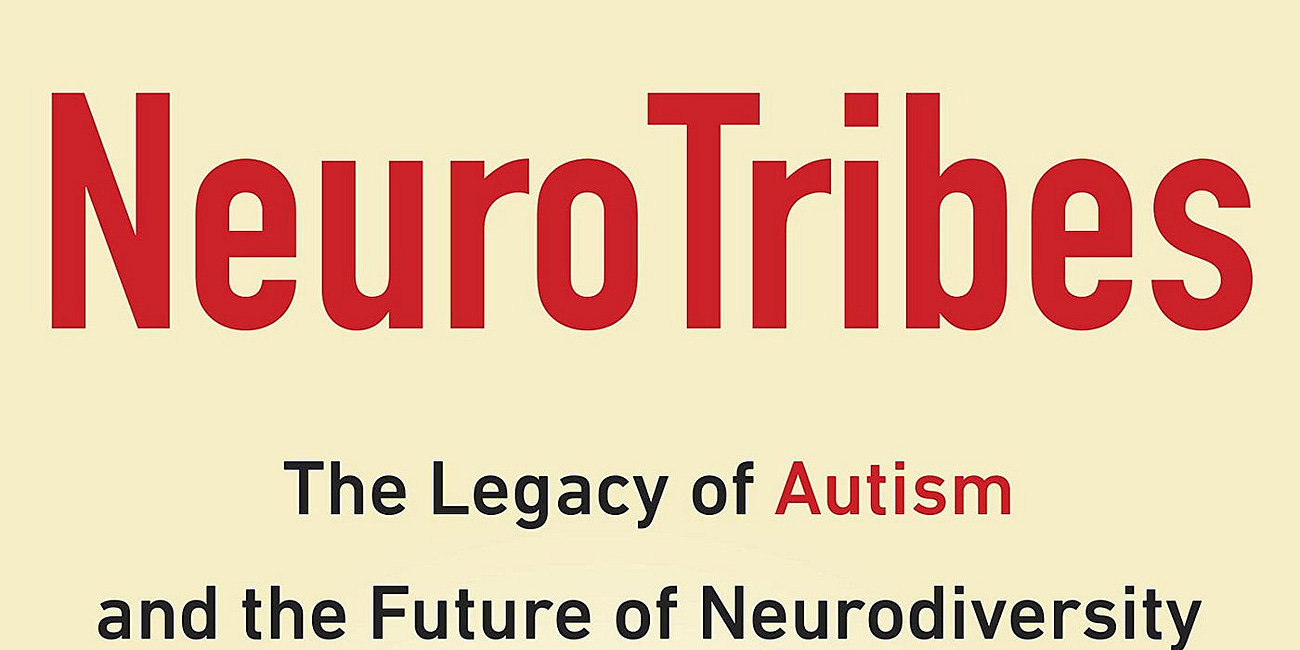What is a Biomarker and why are People Looking for them in Autism?
Biomarkers are objective biochemical measurements, and they’re good for more than “curing autism”
If you read about autism research, you’ve probably seen the word “biomarker.” It can refer to things as various as genetic mutations, levels of the hormone oxytocin, brain activity patterns – even head size during the first year of life. You may have wondered, what is a biomarker? Why are scientists looking for them in autism and other developmental disabilities? Are they likely to find any?
A biomarker is an objective physiological measurement
Let’s put autism aside for the moment and talk about what a “biomarker” means, in general.
In medicine, a biomarker is an objective change in the body associated with a specific condition, usually a disease. For example, in Alzheimers Disease, amyloid-beta proteins in the brain build up to form plaques, and tau proteins form tangles. These proteins enter the cerebrospinal fluid that bathes the brain, and eventually, the bloodstream. Thus, we can use the concentrations of amyloid-beta and tau in the bloodstream as biomarkers. Often, the greater the amount of the biomarker, the more severe the disease.
Biomarkers have several uses:
Diagnosis: Biomarkers can differentiate a specific disease from no disease. More importantly, they can often differentiate between diseases that have similar-looking symptoms, but different underlying causes (such as dementia due to Alzhemeimers disease versus Parkinsons disease).
Prediction: In progressive diseases, such as Alzheimers, biomarkers can predict whether a person will transition to a more severe stage years before these clinical symptoms develop.
Monitoring treatment: Some biomarkers decrease as a disease is treated. Thus, the amount of the biomarker indicates the efficacy of the treatment.
Selection for a drug trial or specific treatment: biomarkers can be used to decide who could benefit most from a specific medication, either well-established or still being developed. For example, to discover whether new Alzheimers drugs prevent the disease from developing, researchers need to test them on people before cognitive decline begins. They look for people without any cognitive decline who are especially likely to develop the disease: those with high concentrations of amyloid-beta in their body fluids.
As these examples suggest, biomarkers measure biochemical states, not behavior.
In that way, they differ from the DSM-IV, the current basis for diagnosing mental illnesses and developmental disabilities (and its global equivalent, the ICD-11). These manuals measure behavior – what people do and what they say they experience. Both are based on the subjective judgment of an observer: the person being diagnosed, the diagnostician, or both.
By contrast, biomarkers do not require judgment to interpret.
We may not know why a biomarker works. Is it a main cause, a process that worsens the disease, or an effect of the disease?
In Alzheimers, amyloid-beta plaques develop first, and are a defining symptom, so researchers have assumed that they cause the disease. However, as amyloid-reducing drugs have failed to prevent or cure Alzheimers, researchers are increasingly considering whether amyloid might only trigger the disease, but not itself damage the brain. Other researchers reply that drugs have failed only because we’re not intervening early enough. The jury still seems to be out on what role amyloid-beta plays in Alzheimers disease.
Why look for a biomarker for neurodivergence?
You may be wondering: Is it appropriate to transfer the concept of a “biomarker” from diseases to developmental disabilities?
After all, autism is not a disease.
If you’re familiar with disability history or have followed autism research for a while, you know that much research on “biomarkers” has been driven by the assumption that autism is a disease that can and should be “cured.”
People have understandable reasons for thinking autism is a disease. For many decades, diagnosis required very severe disabilities, including delays in language development. Many people assumed that such extreme disabilities don’t “just happen”; they must instead be caused by a disease. And indeed, some developmental disabilities come from specific genetic mutations: for example, Down Syndrome . Disproportionately many people born with some genetic mutations, such as Fragile X, are also diagnosed with autism. So, people thought autism might work the same way.
Furthermore, autism often comes with diseases, such as Ehlers Danlos syndrome, gastrointestinal symptoms, allergies, asthma, and more. For the autistic person and their family, it can be hard to disentangle what causes which symptoms. Thus, some people assumed that both autism and the physical symptoms resulted from one underlying disease.
However, autism is not some outside entity that steals away one’s personality. It is the way a person perceives, moves, thinks, feels, and acts from birth or earlier. It harms people to tell them that the basic way their brain works is a disease. And that’s just what scientists, service providers, diagnosticians, and other experts said for many years.
For many years, autistic people have worked to convince the world that they are different, and often disabled, but not diseased. In the process, some reject the entire enterprise of identifying and measuring biomarkers of autism — especially in animal “models.”
However, the possibility that autism biomarkers exist is still relevant to those who understand autism as a disability, not a disease. After all, conditions that are not diseases can still involve specific physiological changes, such as pregnancy or menopause. Pregnancy and menopause have “biomarkers” (we just don’t usually call them that).
The same could be true of developmental disabilities like autism, or learning disabilities like dyslexia. In fact, it must. Everything that happens in the mind somehow occurs in the brain, and altering the state of the brain also changes mental states. Injuring certain parts of the brain leaves people unable to recognize faces; caffeine makes them energized or jittery; anesthesia dulls pain and consciousness. Because autism is something that happens in the brain, it must corresponds to some objective physical processes — in other words, biomarkers.
Most autistic people I’ve met are curious about how their brains work. In fact, they’re much more curious about their own and others’ brains than most neurotypical people I’ve met. However, they can benefit from the discovery of biomarkers in more ways than just self-knowledge.
First, objective biomarkers could make diagnosis easier and more accurate.
Currently, there seems to be a consensus among researchers and service providers that developmental disabilities are overdiagnosed in some communities while underdiagnosed in others. I agree.
Now, suppose there were an objective blood test for autism. To the extent people have access to this test, they would no longer be over- or under-diagnosed for subjective reasons. In particular, socioeconomic deprivation or aspirations could no longer directly influence the diagnosis.
For example:
More adults and women would be diagnosed. The stereotype that autism is a condition of little boys would not affect a blood test.
Fewer low income, low IQ, or otherwise disadvantaged boys would be diagnosed.
High-income, generally high-achieving people would be less often diagnosed simply because they fail to meet unrealistic middle-and-upper-class expectations of excelling in all areas of school and life, while appearing to “have it all together.”
African American boys would be less often assumed to have behavior problems and (mis)diagnosed with ADHD.
High IQ people might be diagnosed more often. Even a doctor who thinks someone with high grades can’t have autism couldn’t argue with the results of a biomarker test.
Fewer children would be diagnosed merely because they read by themselves during recess, talk nonstop about topics of passionate interest, have flat affect, or seem generally quiet and nerdy.
Socioeconomic inequality could still affect access to diagnosis, but the test itself would be bias-free.
Second, an objective biomarker would enable differential diagnosis: the hardest part of diagnosing neurodevelopmental disabilities.
I worked for a year in a multidisciplinary speech/language/learning clinic, watching a team exhaustively evaluate almost-three-year-olds for every conceivable developmental delay and disability. I learned that differential diagnosis is so hard that doing so accurately can require the judgment of (perhaps multiple) trained, experienced experts.
Most people who “self diagnose” are noticing real similarities between themselves and neurodivergent people. They have neurodivergent traits. And, in my anecdotal experience, they usually are neurodivergent in some way. But which diagnosis, or diagnoses, fit best? Do they have autism, ADHD, developmental language disorder, nonverbal learning disability, dyspraxia, sensory processing disorder, anxiety, depression, or some combination?
Even trained, experienced professionals have difficulty determining how to categorize people, for good reason. People with one disability often have others – and the combinations vary. Furthermore, symptoms overlap. For example, traits of ADHD, anxiety, depression, and sensory processing disorder can all cause similar-looking behavior (such as avoiding loud, crowded gatherings).
Worse, the differences between people with the same disability are much bigger than the difference between disabilities. An autistic person with verbal gifts and spatial disabilities might look similar to a non-autistic person with the same strengths and weaknesses. Meanwhile, a verbally-skewed autistic person might look very different than another autistic person with verbal disabilities and spatial gifts.
Neurodivergent people are the experts on our own minds. However, we rarely know how we compare to entire populations of people with different kinds of brain development. That’s where professional training and experience come in.
Third, biomarkers could make the diagnostic process shorter and less complex.
Fewer people would have to “self-diagnose” in the first place if professional evaluations were more accessible.
Here’s what it’s like to go through a diagnostic evaluation with a neuropsychologist or educational psychologist:
You fill out a battery of questionnaires,
You try to recall everything about your childhood,
Your parents and possibly others close to you also recall everything possible about your childhood and current behavior,
You do about 4 hours of in-person testing over at least 2 days,
The clinician spends countless hours calculating results via computer program, interpreting how they fit together, and writing up a report.
The time and complication involved make evaluation extremely expensive and hard to access.
Now, imagine if instead of endless questionnaires and hours of tests, the evaluation was just:
Getting your blood drawn
or even:
Sitting in an MRI scanner for an hour.
Wouldn’t that be cheaper and easier for everyone involved?
Should we look for biomarkers in autism?
Should we look for biomarkers of autism?
I think yes, carefully. And perhaps calling them by a different name.
Research on biomarkers has a troubling history. Yet, the basic concept holds promise for diagnosing autism and other disabilities. A biomarker is an objective measure of how the brain and body function, and people with developmental and learning disabilities have brains and bodies that function differently.
Objective measures could reduce the biases that currently lead to both over- and under-diagnosis. In principle, they could also make it easier to differentially diagnose neurodivergent people.
So here’s the million dollar question: are there any biomarkers that are consistently true of autistic people, and also specific (not true of other people)?
Most research on genetics, molecular interactions, and brain activity in autism assume the answer must be yes.
Are they right? We’ll get to that. Stay tuned.
…
Do you think there will be biomarkers for autism, ADHD, or other kinds of neurodivergence? If so, what do you think they’ll be like? How can we make sure to use biomarkers ethically and respectfully?
You might also like…
For more about the challenges and ethics of diagnosing disabilities, see:
DSM Diagnoses are Families, Not Definitions
The general argument of this post appeared several years ago on Blogspot. It has been substantially rewritten. Here it is, at last.
For more about the ethics of autism research, see:
What do we trust when research and lived experience conflict? (Part 1)
This post originally appeared on Medium on May 17 and posted with edits here on June 15, 2023.
What do we trust when research and lived experience conflict? (Part 2)
First published on Medium, May 17 2023. Edits made on June 15, 2023.






